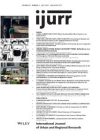In metropolitan Detroit, scholars have long observed that geographic space is racialized in the sense that black Americans are not welcome in many suburban communities. This extends beyond housing segregation: black drivers are not wanted on many suburban streets. While the existence of racial animosity has been documented, the enforcement mechanisms utilized to ‘protect’ certain geographic areas from black presence have rarely been quantified and dissected. This study examines police behavior toward black motorists who were arrested during routine traffic stops in the Detroit suburb of Eastpointe. Comparison of search, arrest, and handcuff patterns of white and black motorists indicates that police bias harms blacks. Rather than simply being anti‐black, patterns of police behavior in Eastpointe enforce racialized space, signaling where black presence is tolerated and where it is discouraged.
Details
Written by:
TIM BATES, DAVID FASENFEST
Digital Object Identifier (DOI)
10.1111/j.1468-2427.2005.00631.x
About DOI
Read full article as PDF
Read full article as HTML
See the references for this article
